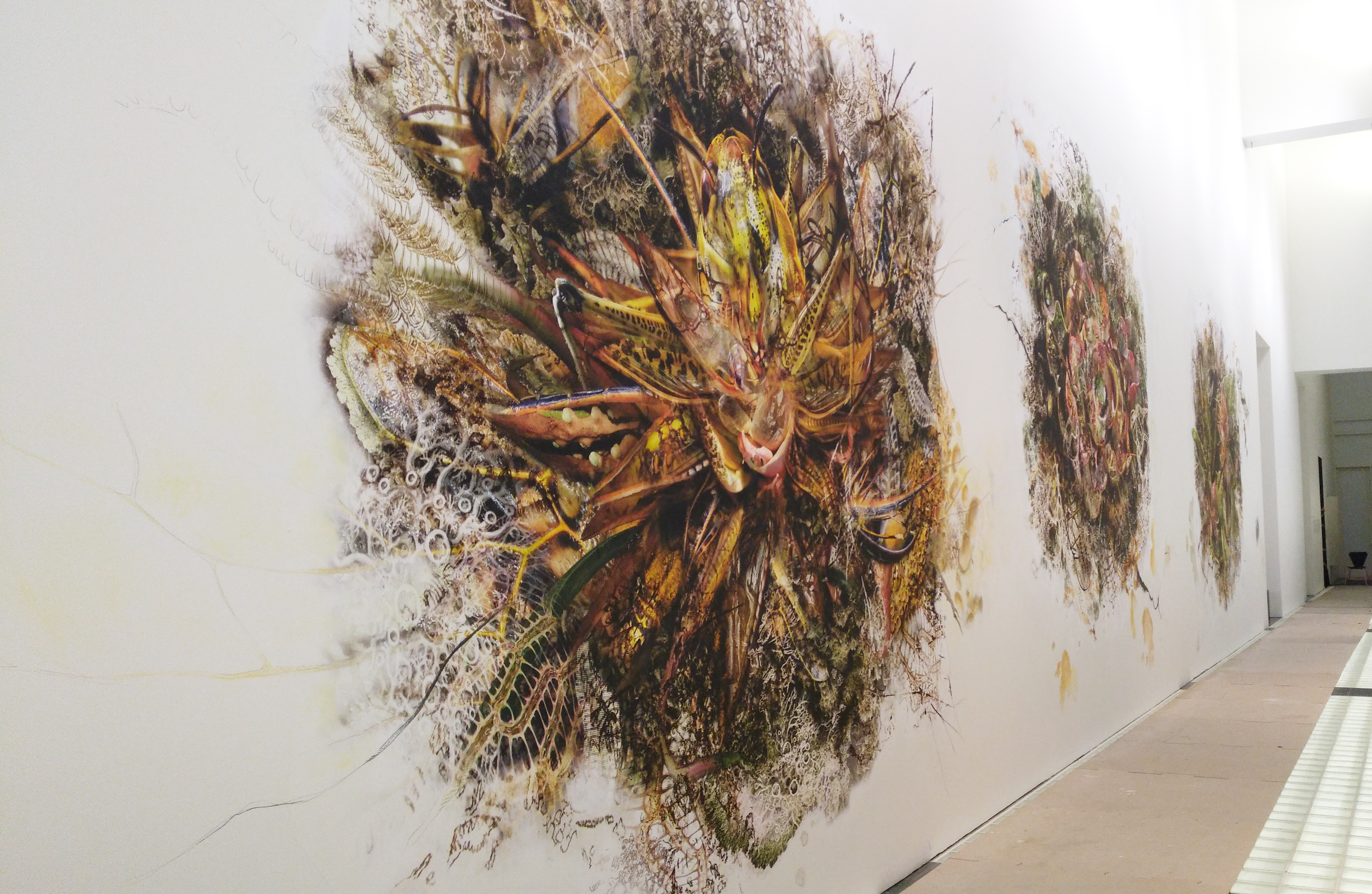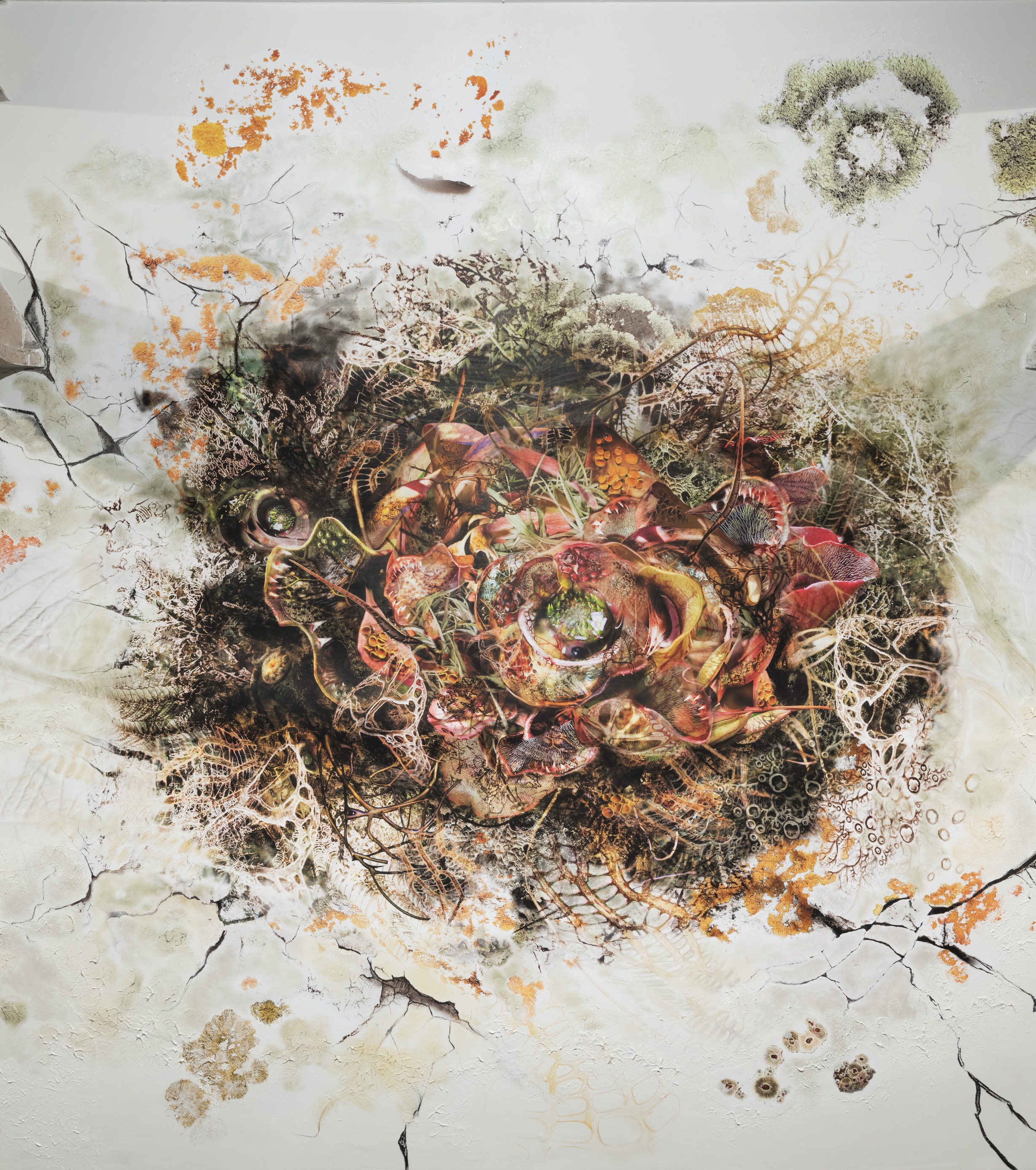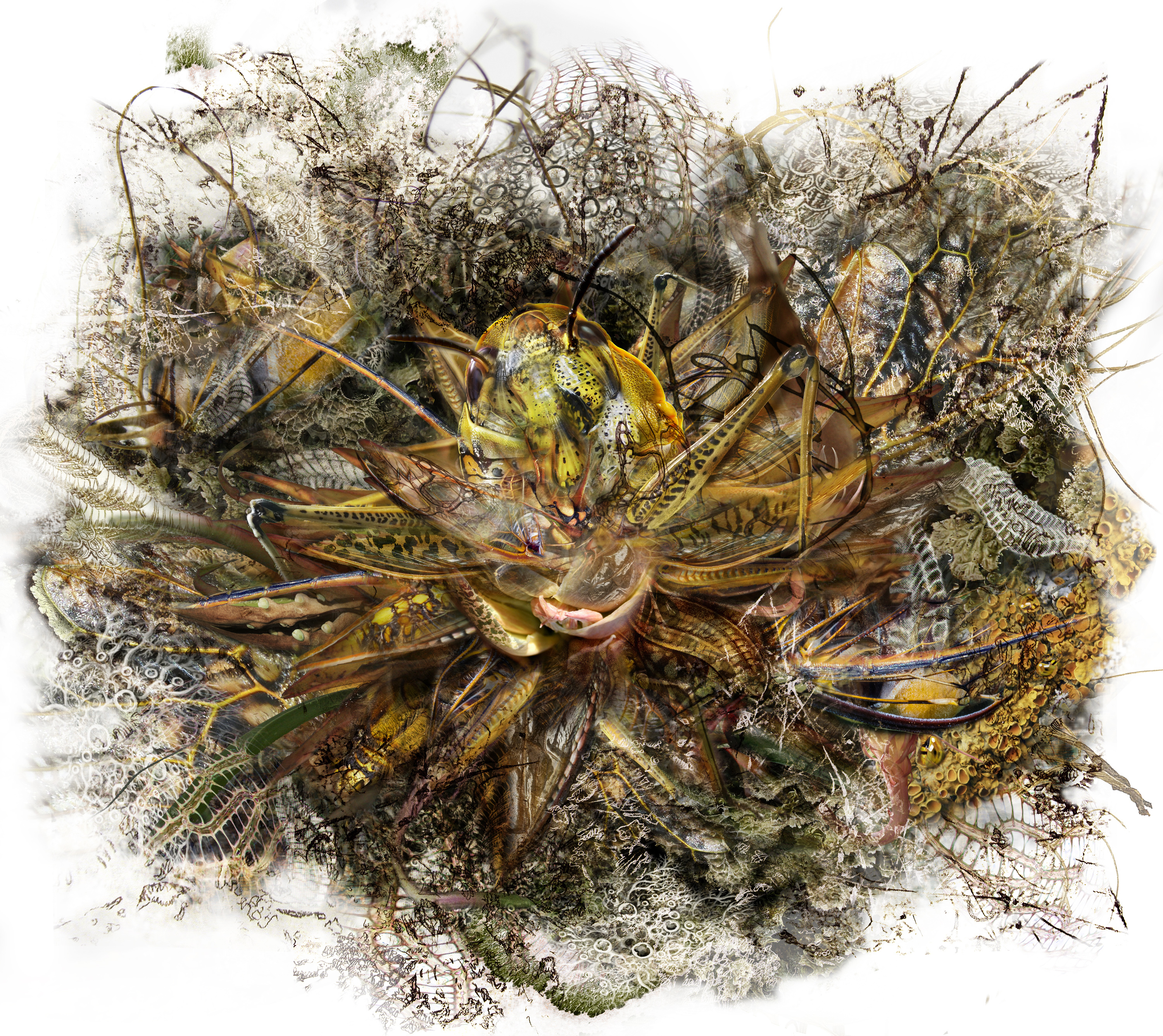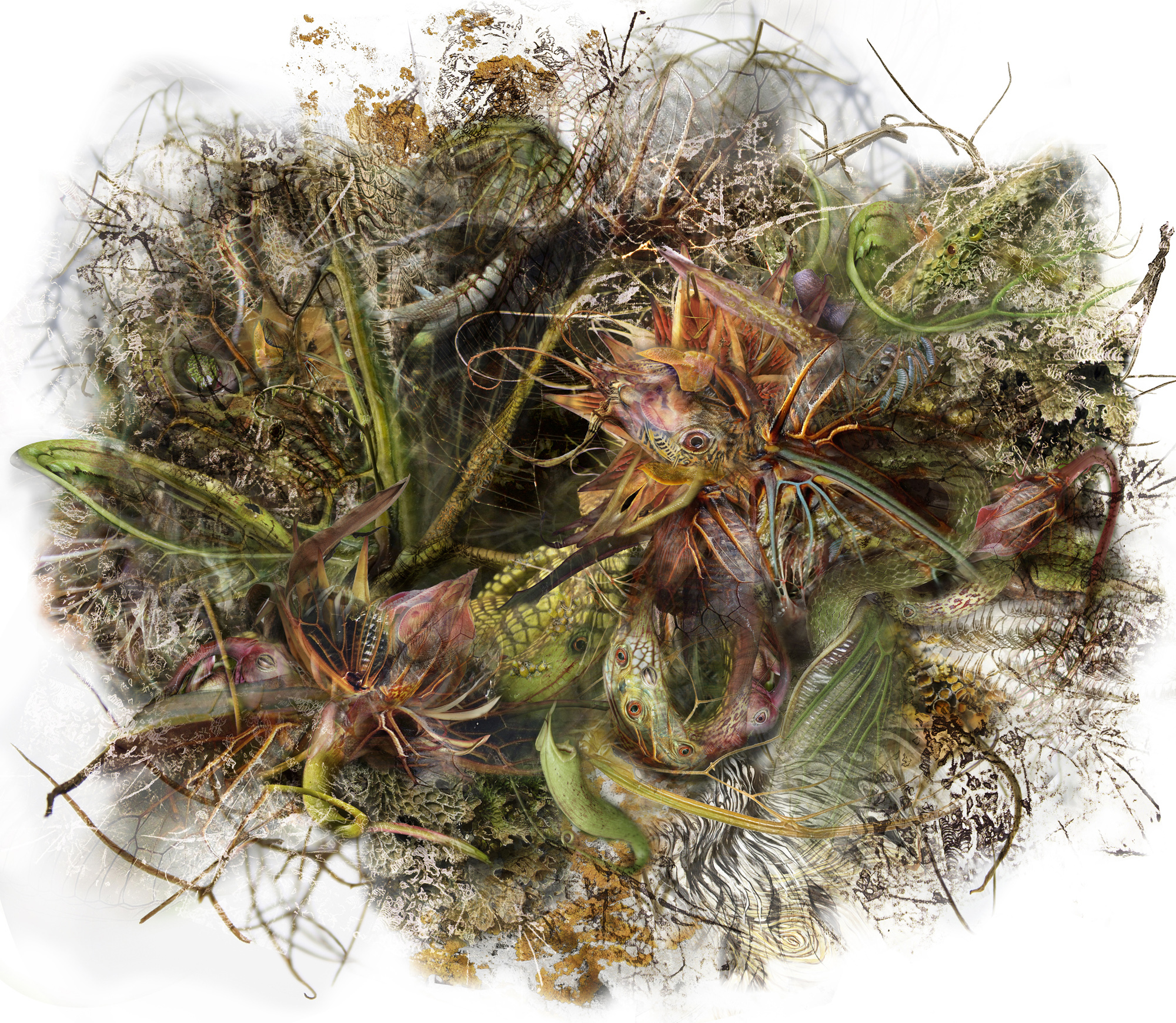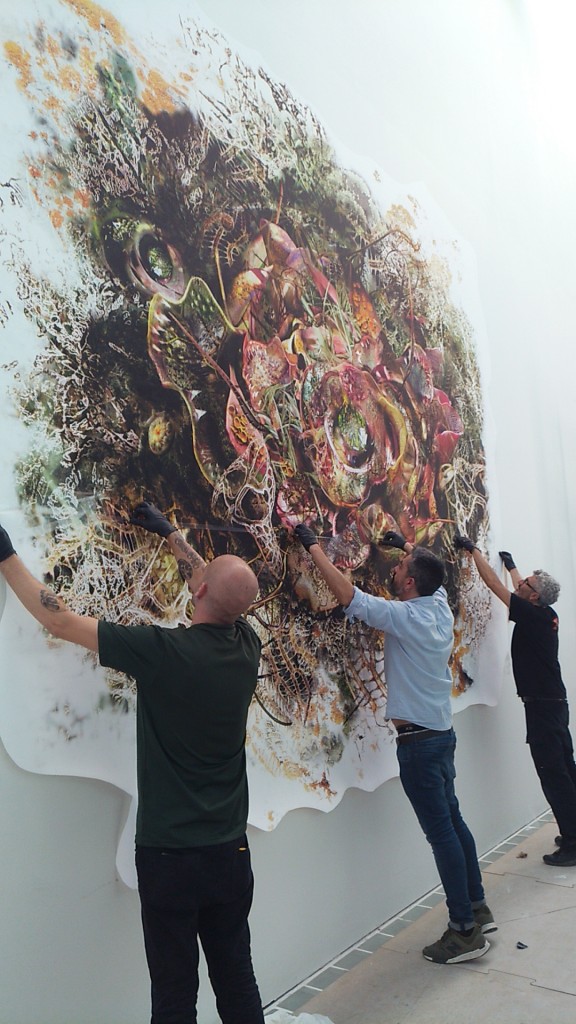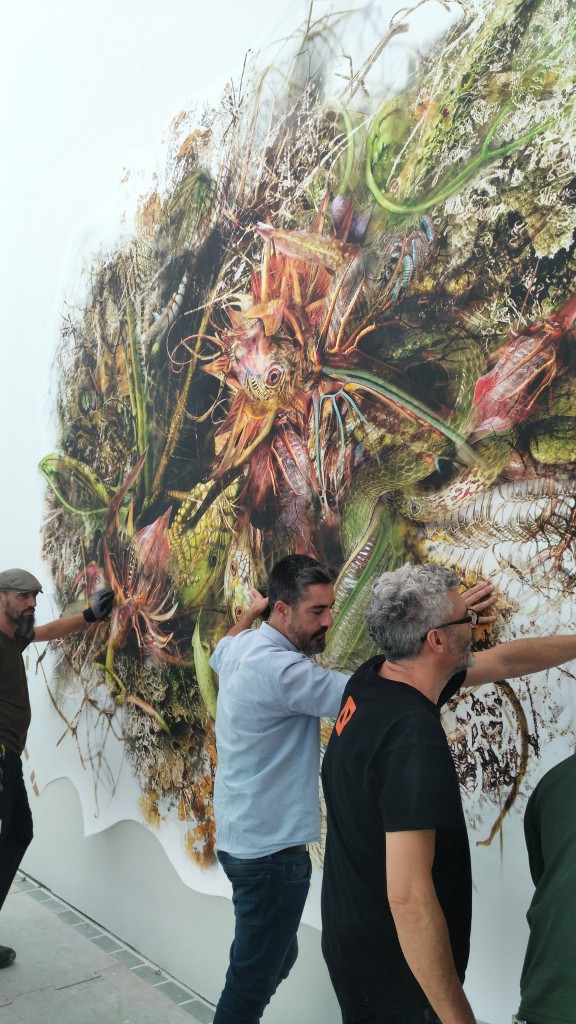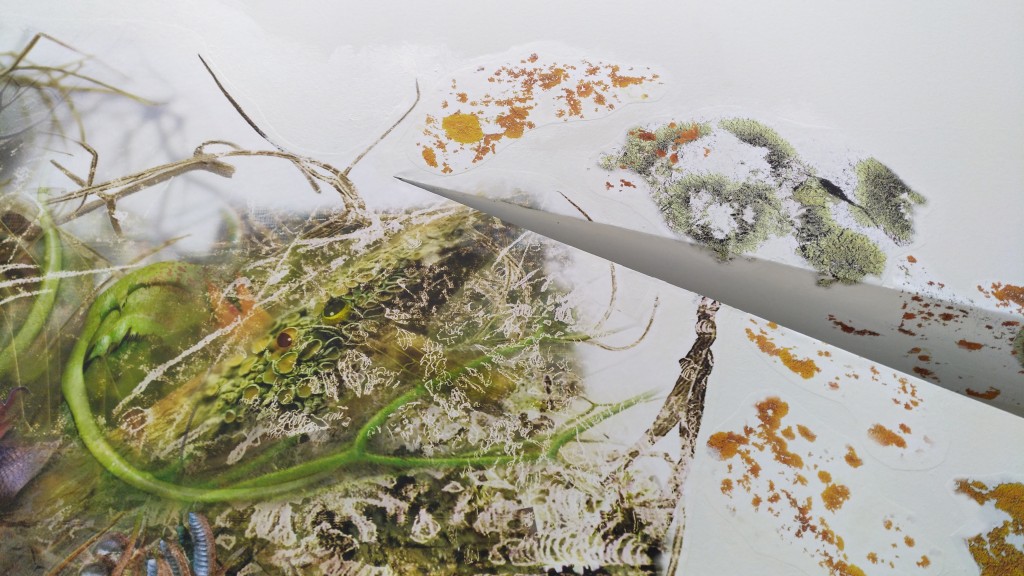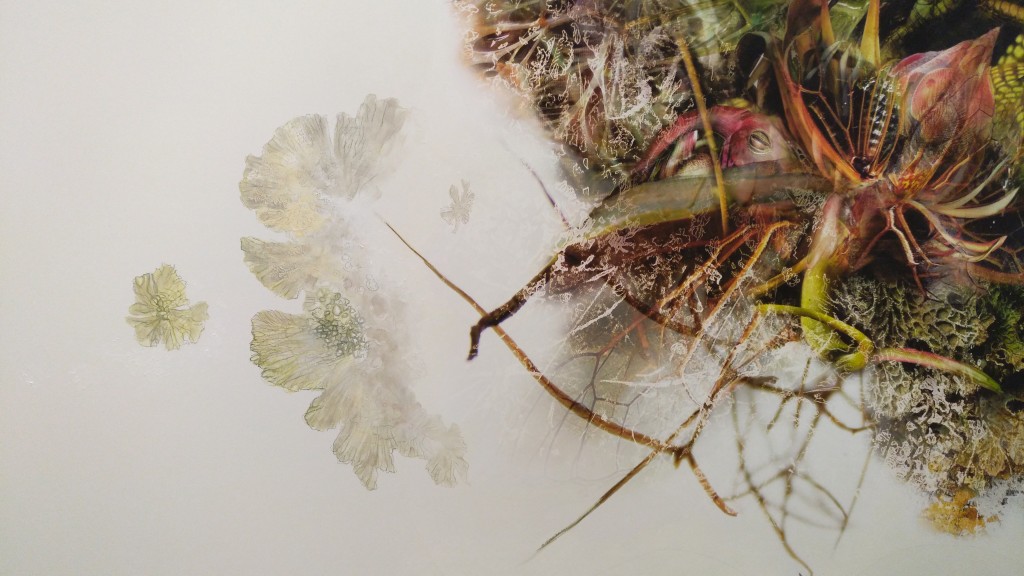Genetic Drift: SYMBIONTS
drawing on archival pigment prints | 60 x 80 inches | 2018
“I don’t think we’re looking at a plant,” Whitby says, tentative, at one status meeting, risking his new relationship with the science division, which he has embraced as a kind of sanctuary.
“Then why are we seeing a plant, Whitby?” Cheney, managing to convey an all-consuming exasperation.
“Why are we seeing a plant that looks like a plant being a plant. Doing plant things, like photosynthesis and drawing water up through its roots. Why? That’s not a tough question, is it, really? Or is it? Maybe it is a tough question, I don’t know, for reasons beyond me. But that’s going to be a problem, don’t you think? Having to reassert that things we think are the things they are actually are in fact the things they are and not some other thing entirely. Just think of all the fucking things we will have to reevaluate if you’re right, Whitby — starting with you!”
Cheney’s blistered, reddening expression bears down on Whitby as if he were the receptacle of every evil thing that has ever afflicted Cheney since the day he was born.
“Because,” Cheney says, lowering his voice, “if that’s a tough question, don’t we have to reclassify all the really tough questions?”
Later Whitby will regale you with information on how quantum mechanics impacts photosynthesis, which is all about “antenna receiving light and antenna can be hacked,” about how “one organism might peer out from another organism but not live there,” of how plants “talk” to one another, how communication can occur in chemical form and through processes so invisible to human beings that the sudden visibility of it would be “an irreparable shock to the system.”
Vandermeer Jeff, Acceptance: Southern Reach Trilogy
Genetic Drift is a term in evolutionary biology that is used to describe the variation in the relative frequency of different genotypes in a small population, owing to the chance disappearance of particular genes as individuals die or do not reproduce. British artist Paul Morrison has described his interest in “cognitive landscape. the terrain that one sees, somewhere behind the eyes’. This idea of a landscape that looks back, of a nature that is non-passive, in turn idyllic, uncanny, threatening, and seductive, is something I have been working with for some time now.
Genetic Drift is a family of three Symbionts, which share a few similar antecedents but are also deliberately distinct in their primary genetic morphology.
SYMBIONT I – Hymenoptera Magnoliophyta (wasp flower) is made of bees, wasps, loctusts, grasshoppers, and butterfly cocoons. The base of SYMBIONT II– Cavum Oris Plantae (mouth plant) is a composite of a variety of am flowering plants and pitcher plants while SYMBIONT III– Serpentes Parthenocissus (snake creeper) has several species of snake, frog and chameleon. The work includes drawings both on the prints and on the wall which hopefully suggests a kind of proliferation or contamination beyond the boundary of the work.
All the pieces were with photographs sourced from public domain sites in addition to photographs I have taken on visits to botanical Gardens etc., in addition to scans of drawings, etching etc.
- Genetic Drift: Symbiont II, installation in progress at the Museo de Arte Moderno de Barcelona
- Genetic Drift: Symbiont III, installation in progress at the Museo de Arte Moderno de Barcelona
- Genetic Drift: Symbiont II, installation view at the Museo de Arte Moderno de Barcelona
- Genetic Drift: Symbiont II, installation view at the Museo de Arte Moderno de Barcelona
